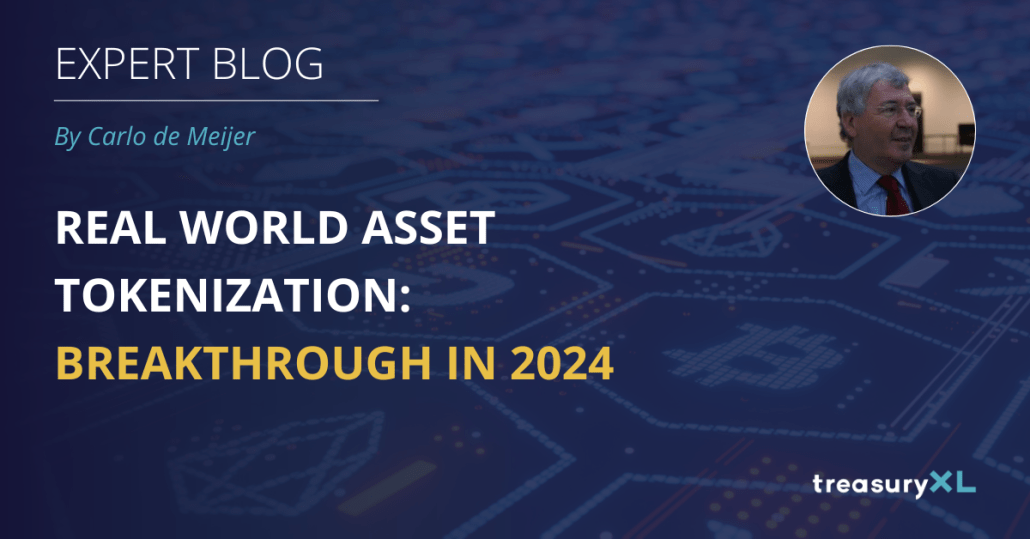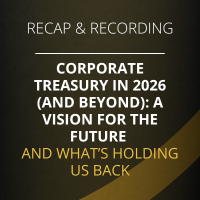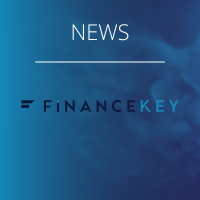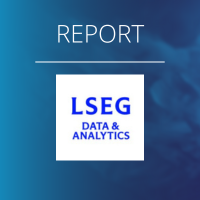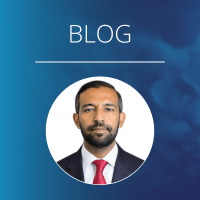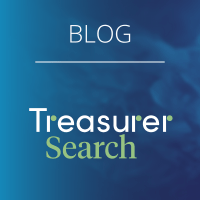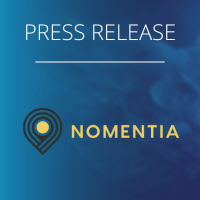This is however fundamentally changing. Tokenization, the process of transforming real world assets (RWA) into digital tokens on a blockchain network, is gaining momentum and has attracted considerable interest in recent times among financial institutions and has caught the eye of retail and institutional capital investors in 2023.
Tokenization is increasingly being hailed as a revolutionary breakthrough in the world of finance, bringing the benefits of blockchain technology to traditional assets.
In this blog, we lay out the basics of tokenization, we will explore the underlying mechanisms of real asset tokenization, how tokenization works, share our view on the main use cases and what it might mean for the future.
Why RWA tokenization may take off?
There are several reasons why RWA tokenizing might take off. For one thing, the higher interest rates of the current cycle are improving the economics for some tokenization use cases. Tokenized real-world assets are emerging as a hedge against market volatility.
The current high yield environment has given tokenization a somewhat different significance as an opportunity for digitizing financial assets such as sovereign bonds, money market funds and repurchase agreements.
Presently, certain real world asset classes suffer from limited liquidity and high entry barriers, making them less accessible. Many of these assets face restrictions on transferability and divisibility.
We are also witnessing a shift in how real world assets are being viewed by the world governments and regulators. Jurisdictions around the world have been forced to consider regulatory changes in order to be able to benefit and/or launch their own real world assets for their own needs.
What’s more, since tokenization debuted five years ago, many financial services companies have significantly grown their digital asset teams and capabilities. As these digital asset teams mature, we may see tokenization increasingly used in financial transactions.
What is asset tokenization?
Blockchains allow existing real world assets (RWA) and capital to be “tokenized. At the heart of this practice is the conversion of tangible physical assets into digital tokens, making them easily traded, transferred and managed using distributed ledger technology.
These tokens serve as digital certificates of ownership, capable of representing a vast array of assets in digital form, combined with information and assignable digital rights, all of which are connected in a programmable and automated manner
Once generated, these tokens are enshrined in the blockchain, ensuring immutability and tamper-proof integrity.
From stablecoins and NFTs
Tokenization can create several types of tokens. Most of the tokens that nowadays exist, include stablecoins and NFT’s. so-called utility tokens that is happening in the crypto sphere.
Stablecoins, a type of cryptocurrency pegged to the value of real-world stable assets designed to be fungible, or replicable, are one example. They are designed to reduce the volatility associated with other cryptocurrencies. They are mostly used for DeFi transactions.
Another type of token is an NFT—a nonfungible token, or a token that can’t be replicated—which is a digital proof of ownership people can buy and sell. They can include tokenized versions of arts and collectibles, concert tickets, loyalty programs, certificates, digital twins, intellectual property, but also more exotic assets like sports teams, racehorses, artwork, and even shares in the fame of celebrities.
Towards RWA tokenization
But that is fundamentally changing. There is an increasing move towards the tokenization of real world financial assets. Especially since this year, several established financial powerhouses have embraced the notion of tokenizing real-world assets, including securities, stocks and shares, investment funds, payment settlement, real estate, and commodities.
This RWA asset tokenization process involves a number of steps including asset sourcing, digital asset issuance and custody, distribution and trading and asset servicing and data reconciliation.
What is happening right now, already?
Major financial institutions are exploring tokenized financial instruments on blockchain, showcasing growing confidence in decentralised networks.
Traditional finance giants including names like BlackRock, Fidelity, BNY Mellon, JP Morgan, Goldman Sachs, UBS and HSBC are already using the blockchain to tokenize a range of assets that actually fill in with the real world.
These institutions are beginning to move beyond just tokenizing assets for operational uses and savings such as repo and collateral management and are now placing tokenized products with their own client bases as buyers.
JP Morgan has developed tokenized funds and we will soon see the development of even more structured instruments, including assets from new revenue sources such as private credit.
HSBC pointed out its plans to start a digital-assets custody service for institutional clients focusing on tokenized securities issued on third-party platforms such as private and/or public blockchain compatible tokenized bonds or tokenized structured products.
This growing trend to support tokenization is also supported by various governments worldwide. This by reforming regulations to better accommodate the tokenization of real-world assets. Such as in Asia, where governments and policymakers like Hong Kong and Thailand, are actively shaping its use for real-world assets, seeking to unlock new revenue streams and reduce costs. But also regulators in Japan, the UK and Switzerland said they will test tokenization for fixed income, foreign exchange and asset management products.
What may RWA tokenization bring?
Once met with scepticism, tokenization is now seen as a viable option for governments and financial institutions worldwide. They are now much more aware of tokenization’s benefits, including the ability to run operations 24/7 and deliver 24/7 data availability.
Thanks to blockchain, tokens can be transferred directly (within minutes) between parties, without intermediaries (in clearing, settlement and custody), reducing transactional costs and increased asset liquidity into the credit market.
As tokenised assets are recorded on a blockchain, which provides a transparent and immutable record of ownership tokenization this will also enhance security, empowering self-sovereign identity solutions and bolster data privacy.
Blockchain offers instant transaction settlement and a higher degree of automation (via embedded code that only gets activated if certain conditions are met), replacing redundancies with a lean and efficient model, safeguarding data, while facilitating automated procedures including audit and compliance, minimizing counterparty risk.
Tokenization would also bring fractional ownership of such assets (that historically had high investing thresholds) through breaking them into pieces, and making them accessible beyond borders thereby democratizing access to assets that might otherwise be out of reach for many. This enables access to investments for many people who are currently unbanked by reducing barriers to entry.
Different RWA use cases for tokenization
Financial assets
Tokenization of financial assets uch as bonds, stocks, and shares, enables the fractionalization of these assets. As a result, their accessibility to investors from all over the world is significantly increased.
Other benefits include fractional trading of these assets leading to a larger liquidity pool and a broader range of investors. The tokens can be traded on a decentralized network which makes it cheaper, faster and more secure than traditional methods of exchanging assets. Additionally, tokenization use cases for financial assets supports efficient processing of daily issuances, increases secondary liquidity through more investors, and reduces costs.
Investment funds
We also see a growing interest from private equity and treasury fund side. Tokenization use cases for funds may apply along the entire value chain and support a full lifecycle to fractionalized investments. A better portfolio diversification is made possible alongside lower transaction costs.
Fund managers may benefit from greater flexibility and control in distribution of assets. They may realize operational efficiency gains, easier access for investors with a global reach through fractionalization.
Lower barriers to entry, better price discovery, and improved liquidity, lower costs of issuance and servicing through digitization.
The tokenization process makes it also easier to track and service investors, and allows built-in compliance, near instant and low-cost transfers and settlement programmed through smart contracts.
Payment settlement
The delivery-versus-payment (DvP) settlement of token-based securities or other financial asset transactions can take place automatically and simultaneously via the use of smart contracts, without the need for intermediaries such as CSDs. This may deliver a number of important benefits including real-time settlement and lower costs.
Real estate
And there is the tokenization of real estate assets, which has traditionally been complex and slow moving. Tokenization involves converting ownership rights into digital tokens on a blockchain network. Real estate tokenization has the potential to revolutionize the traditional real estate investment landscape. This allows for fractional ownership and more efficient transfer of ownership thanks to near-instant settlement.
Tokenization also provides greater transparency, reduces transaction costs, and eliminates intermediaries, making it easier for a wider pool of investors to participate in real estate investments. It further allows for easier trading on global markets, providing a more secure and streamlined approach for fundraising and investment in real estate projects.
Where is the market for tokenized real world assets going?
Tokenization is potentially a big deal according to industry experts, as traditional financial institutions continue to adopt blockchain technology. Banks and financial powerhouses are increasingly exploring the use of tokenized financial instruments within institutional decentralized finance frameworks.
A multi-trillion dollar market of real world assets being tokenized by 2030 is predicted. This rise underscores the growing recognition and adoption of tokenized assets. Projections on the size of the tokenization opportunity however vary.
Estimates range from Citigroup $5T in tokenized digital-securities trade volume to Boston Consulting Group’s $16T by 2030. This would mark a significant rise from the current value of around USD 300 billion. Looking at the traditional securities market, Boston Consulting Group estimates that tokenized security assets could represent approximately 10% of the global GDP by 2030.
And Asset Manager 21.co in a recent report predicts the market value for tokenized assets could reach $10 trillion in a “bull case” scenario and $3.5 trillion in the “bear case,” by 2030.
Challenges: hurdles and what to do about it
Notwithstanding all these positives, the introduction of tokenization also presents a number of challenges that may be a barrier to widespread development and adoption.
Regulatory issues, lack of standardised processes and reluctant incumbents pose challenges for widespread global accessibility of tokenized RWAs. And there are other hurdles like technical bottlenecks, limitations around current infrastructure and interoperability that are limiting its uptake.
Legal and regulatory hurdles
Most tokenization efforts face large legal and regulatory hurdles during primary issuance as many laws governing this space are still new, and a number of key jurisdictions still lack clear legal frameworks for tokenization. Because of this regulatory ambiguity, multiple platforms are often required to handle tokenized assets in different jurisdictions.
Interoperability issue and lack of standardisation
And there is the interoperability issue and the lack of standardisation. Most institutions rely on private blockchains that mostly do not communicate with other blockchain platforms. Private networks can potentially make interoperability more difficult in the future. One possible result may be fragmented liquidity across chains and the challenge of investor onboarding particularly in the secondary markets
Missed granularities
Another weak point in the tokenization industry to date is actual product distribution and capital syndication. Currently, most tokenization of financial assets are just digital representations of reserves held by companies. It misses the granularities of how various assets actually exist, like their financial obligations, liabilities or cash flows.
Incomplete real-time settlement
Another hurdle is that some of these platforms only settle the trade leg on chain but not the cash leg, so the process of real-time settlement is incomplete.
Reluctancy incumbents
And as with any new technology, it is common that incumbents in positions of power may be reluctant to see progress made. Such as pension funds or the asset management industry. In the context of funds, certain parties have been reaping significant profits from existing inefficiencies. Also in the asset management industry, where incumbents impose administrative burdens when transferring assets, especially those in tax-protected investment.
Lack of expertise and knowledge
And with new technologies arise new challenges. Expertise around tokenization is still scarce and the knowledge is not widely available. This can prove to be quite challenging for anyone looking to leverage and unleash the full potential of such innovation.
Address the hurdles
Significant hurdles need to be overcome for widespread adoption, particularly pertaining to the complexities of integration into existing real world systems. Appropriate safeguards should be implemented to protect investors and the overall economy. Tokenized real-world assets will also likely necessitate the creation of robust, scalable infrastructure designed to fuse with the traditional financial ecosystem versus trying to replace it.
The last year 2023, however, has seen incredible progress towards overcoming these issues. The establishment of the world’s first comprehensive framework for crypto regulation in Europe, MiCA, as well as of more accommodating regulatory stances in other countries around the world ensuring security and building trust, are paving the way for an easier adoption of tokenization within the financial infrastructure. And also the interoperability issue is increasingly being solved given the large number of solutions that are entering the market, including the establishment of standards for tokenization protocols.
RWA Tokenization: a transformative and disruptive force
Real world asset tokenization presents itself as a great opportunity.to overstep the boundaries between the virtual and the real financial world. It emerges as a major transformative force redefining the legitimacy of the blockchain industry in the global financial landscape.
By ensuring complete and immutable visibility of transactions, the blockchain consolidates its credibility and establishes a solid bridge between both worlds.
It opens a gateway to closer integration between crypto and traditional asset classes, including fiat currencies, equities, government bonds, and real estate.
The future of tokenization is expected to be dynamic and transformative since it has the potential to revolutionize various industries. The utilization of security tokens that adhere to regulatory frameworks may disrupt all kinds of financial markets and industries changing the way financial transactions are nowadays being executed.
As intermediaries are no more or much less needed it may drastically cut down existing operational layers — trading, clearing, settlement, custody and reporting. It may also cause significant disruption to traditional fundraising techniques and methods and transform the structure of traditional financial services and global capital markets.
Tokenization of real world assets firmly enlarges the chance to automate and streamline back-office operations ally, replacing legacy systems with cost-efficient and instant settlements.
Forward looking
Tokenization has the capacity to revolutionize a wide range of industries, presenting a significant opportunity for shaping the future of finance and investment, and could have a considerable impact on the global economy. Tokenization is reshaping and revolutionizing the way how many institutions fund, trade, and manage their financial assets. Other than bringing significant efficiency gains to processes in general, it also opens up the potential to create new revenue streams.
2024 will be a breakthrough year for RWA tokenization.
I wish all of you also a great year 2024!

